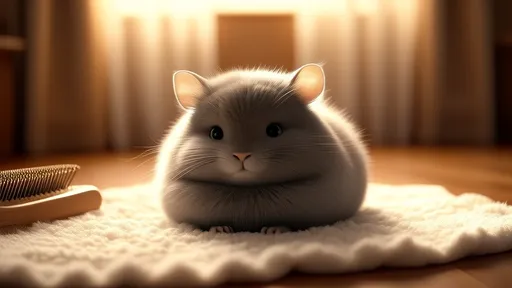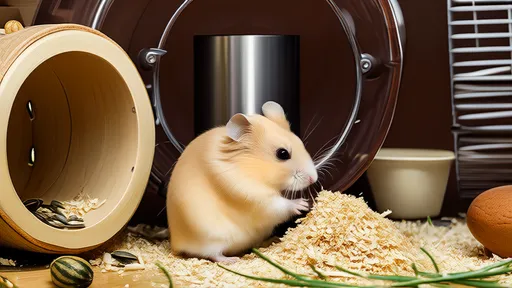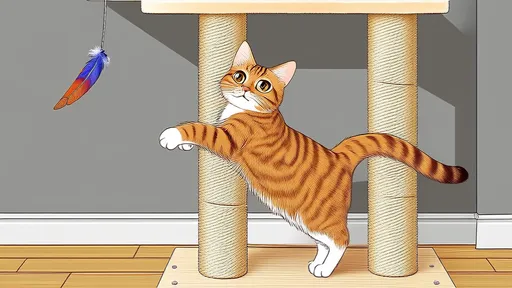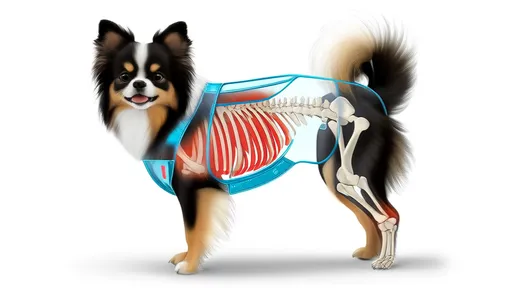Creating the perfect habitat for a pet hamster involves more than just placing a cage in the corner of a room. These small, energetic creatures thrive in environments that mimic their natural instincts while providing safety and stimulation. A well-designed cage setup can significantly impact a hamster’s health, happiness, and longevity. Whether you’re a first-time owner or looking to refine your current setup, understanding the nuances of cage arrangement is essential.
The foundation of any hamster cage begins with the right bedding. Hamsters are burrowing animals by nature, so providing a deep layer of safe, absorbent bedding is crucial. Paper-based or aspen shavings are excellent choices, as they allow for tunneling while avoiding the respiratory risks associated with cedar or pine. A depth of at least six inches encourages natural digging behaviors, which not only keeps your hamster entertained but also helps regulate stress levels. Avoid scented or overly dusty options, as these can irritate sensitive respiratory systems.
Space is another critical factor often underestimated by new owners. While pet stores may sell small, colorful cages marketed for hamsters, these rarely meet the animal’s needs. Dwarf hamsters require a minimum of 450 square inches of unbroken floor space, while larger Syrian hamsters need even more room to explore. Multi-level cages can add vertical space, but the primary focus should always be on ground-level area for running and foraging. Glass aquariums with mesh lids or well-ventilated plastic bins often make better enclosures than traditional barred cages, which can limit bedding depth and lack insulation.
Exercise equipment forms the backbone of an engaging hamster environment. A solid-surface exercise wheel is non-negotiable—wire wheels can cause serious foot injuries. The wheel should be large enough that the hamster’s back doesn’t arch while running; typically 8-12 inches in diameter depending on the species. Additionally, providing multiple hideouts made from ceramic, wood, or opaque plastic gives your pet essential privacy spots. These should be distributed throughout the cage to create a sense of territory and security. Tunnels connecting different sections can further enrich the layout, simulating the underground networks hamsters create in the wild.
The strategic placement of food and water sources encourages natural foraging behaviors. Rather than using a single food bowl, scatter small portions of food throughout the bedding to stimulate hunting instincts. Water bottles should be mounted at a height accessible to the hamster without straining, with the spout positioned about halfway up the cage wall. Chew toys made from untreated wood, loofah, or cardboard help maintain dental health while serving as entertainment. Rotating different textures and shapes of chew items prevents boredom and satisfies the constant need to gnaw.
Temperature and lighting considerations are frequently overlooked in hamster care. These animals are sensitive to drafts and direct sunlight, so cages should be placed in quiet areas away from windows and air vents. The ideal temperature range falls between 65-75°F (18-24°C). While hamsters are nocturnal and don’t require special lighting, maintaining a consistent light-dark cycle helps regulate their biological rhythms. If the room experiences significant temperature fluctuations, providing extra nesting material allows the hamster to self-regulate their comfort level.
Cleaning routines must balance hygiene with stress reduction. Unlike some pets, hamsters establish comfort through familiar scents, so complete cage cleanings should occur no more than once monthly for established habitats. Spot cleaning soiled bedding every few days maintains cleanliness without disrupting the hamster’s scent markers. When performing full cleanings, retain a portion of the old bedding to mix with the new, helping your pet readjust to their refreshed environment. All accessories should be cleaned with vinegar solutions or pet-safe cleaners rather than harsh chemicals.
Seasonal adjustments can keep the cage interesting throughout the year. During warmer months, ceramic tiles or chilled stones provide cooling surfaces, while extra paper bedding offers insulation in winter. Introducing novel items like cardboard boxes with new hole configurations or different types of safe leaves (such as dried mulberry or apple leaves) stimulates mental activity. The key lies in gradual changes—sudden complete makeovers can distress hamsters accustomed to their territory’s layout and scent profile.
Observing your hamster’s behavior remains the ultimate guide to perfecting their living space. Some individuals may prefer more open areas for running, while others enjoy densely packed obstacle courses. Signs of a well-adjusted hamster include active exploration at night, storing food in designated areas, and creating elaborate nest structures. Conversely, excessive bar chewing, lethargy, or repetitive behaviors may indicate an environment needing improvement. With attention to these details, your hamster’s cage becomes more than containment—it transforms into a dynamic habitat supporting their physical and psychological wellbeing.

By /Jun 28, 2025

By /Jun 28, 2025

By /Jun 28, 2025

By /Jun 28, 2025

By /Jun 28, 2025

By /Jun 28, 2025

By /Jun 28, 2025

By /Jun 28, 2025

By /Jun 28, 2025

By /Jun 28, 2025

By /Jun 28, 2025

By /Jun 28, 2025

By /Jun 28, 2025

By /Jun 28, 2025

By /Jun 28, 2025

By /Jun 28, 2025

By /Jun 28, 2025

By /Jun 28, 2025